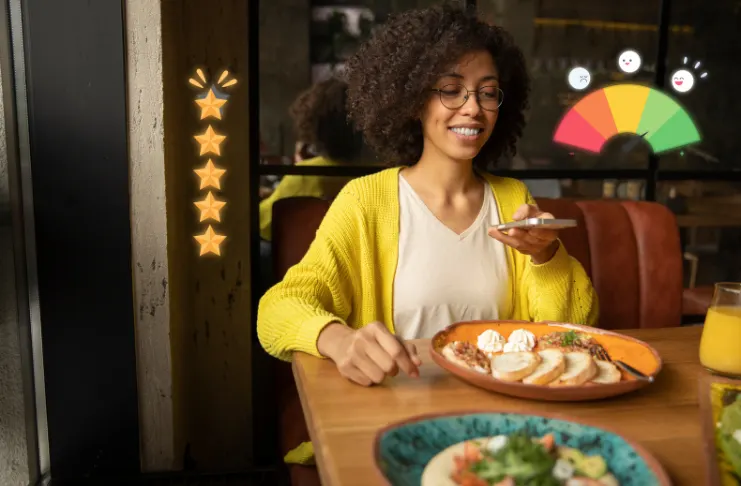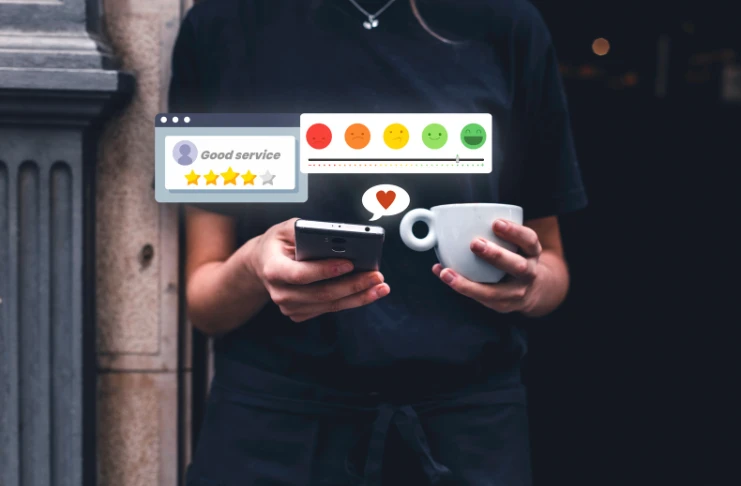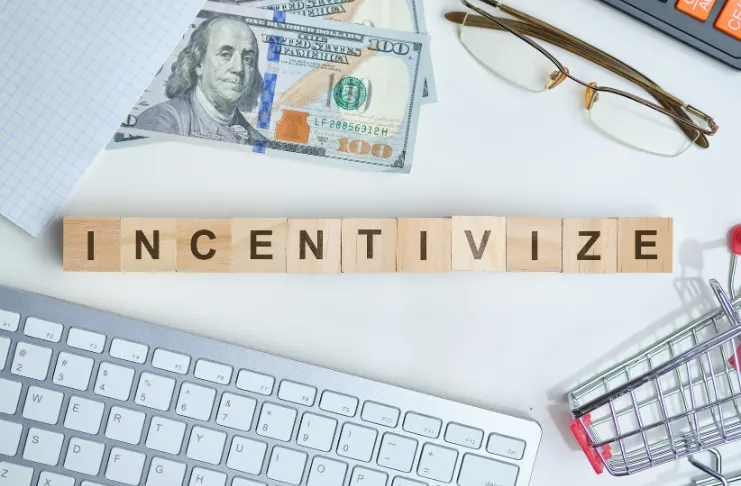Restaurant customer feedback is more than just a comment card or a star rating—it’s the pulse of your business, directly impacting the overall customer experience. The experience diners have in your establishment determines your reputation, retention rates, and revenue.
Restaurant customer feedback provides critical insights that can help you gain valuable insights and transform your operations, menu offerings, and service approach. When diners share their experiences—whether praising your signature dish or noting slow service during peak hours—they offer a window into your business that internal assessments alone cannot provide. This unfiltered perspective helps identify blind spots, reinforce strengths, and address weaknesses before they become persistent problems.
In today’s digital age, where a single negative review can reach thousands of potential customers within hours, proactively gathering restaurant customer feedback and responding to it is essential for understanding customer expectations and business survival.
What Is Restaurant Customer Feedback?

Restaurant customer feedback encompasses the comments, ratings, and insights shared by guests regarding their dining experience. This includes remarks on food quality, service efficiency, staff friendliness, cleanliness, ambiance, pricing, and overall satisfaction, helping to identify patterns in customer preferences. Whether delivered through formal surveys, casual conversations, online reviews, social media mentions, or suggestion boxes, these perspectives collectively form a comprehensive assessment of your establishment through the eyes of those who matter most—your customers.
This feedback exists on a spectrum from structured data (like numerical ratings and multiple-choice responses) to unstructured information (such as handwritten notes and verbal comments). Both types are valuable, with structured feedback enabling quantitative analysis of trends and benchmarking against competitors, while unstructured feedback often contains rich, detailed narratives that reveal unexpected insights and emotional connections. When systematically collected and analyzed, restaurant customer feedback becomes more than just opinions—it transforms into a strategic asset that guides decision-making, helps prioritize operational improvements, and ultimately drives business growth through enhanced customer satisfaction and loyalty.
Why Feedback Is Your Restaurant’s Secret Weapon?

In a fiercely competitive restaurant industry, staying attuned to your customers’ voices isn’t just beneficial—it’s essential. Today’s diners are not shy about sharing their opinions, and they expect restaurants to listen. When leveraged properly, customer interactions through feedback become one of the most powerful tools in a restaurateur’s arsenal, leading to happier customers.
Customer feedback serves as a strategic asset:
- Highlights Strengths and Weaknesses: Understand which areas are winning guests over and which are driving them away.
- Drives Continuous Improvement: Enables data-driven changes in service, menu, and operations.
- Strengthens Guest Relationships: Demonstrates that customer opinions are valued.
- Boosts Online Reputation: Positive feedback builds trust with prospective diners.
INDUSTRY INSIGHT
| ReviewTrackers reports that 94% of U.S. diners are influenced by online reviews when choosing a restaurant. This means that one guest’s feedback could influence hundreds of future visits. Integrating this input into your daily operations is no longer optional—it’s a growth imperative. |
The Business Case for Collecting Feedback
In today’s digital-first restaurant economy, what your customers say about you online can directly shape your bottom line. Gathering and acting on feedback isn’t just about hospitality—it’s about smart business strategy that can lead to more positive reviews. The numbers make a compelling case: According to a data study, restaurants that actively manage and respond to their reviews can earn up to 35% more revenue than those that don’t.
Common Channels Customers Use to Share Feedback

Understanding where customers share their thoughts helps restaurants listen better and act faster. Here are the most popular platforms and tools U.S. diners use to voice their opinions:
- Google Reviews: The go-to for local business discovery. Appears directly in search and Maps results.
- Yelp: Particularly strong in the U.S. for food and service reviews. Yelp Elite users can be highly influential.
- TripAdvisor: A preferred review site for tourists and travelers, especially in larger cities or destination towns.
- Social Media (Instagram, Facebook, X): Customers post reviews, stories, or comments. A viral positive (or negative) post can significantly impact brand image.
- Feedback Kiosks: Tablets or terminals placed at exits allow guests to leave instant ratings—great for fast casual and quick service setups.
- POS-Integrated Systems: Platforms like Toast or Square automatically collect post-payment feedback.
- Email & SMS Surveys: Personalized requests via services like Twilio, Mailchimp, or Customer.io sent within 24 hours of the visit.
- Loyalty Apps & Digital Menus: Integrated feedback prompts in mobile ordering or loyalty programs provide insights during the ordering experience.
These channels also encourage customer feedback and offer multiple touchpoints for listening actively—both in real time and after a visit.
How to Get Customer Feedback in Restaurant Environments

To gather meaningful restaurant customer feedback, it’s important to create channels that fit naturally into the dining experience. Guests are more likely to share their thoughts when the process is intuitive and doesn’t disrupt their visit (especially when using feedback forms). This section outlines the foundational principles that shape an effective feedback collection strategy.
An ideal feedback system is:
- Accessible: Easy to find and use
- Timely: Presented when customers are most likely to engage
- Non-intrusive: Seamless and part of their natural experience
By prioritizing convenience and relevance, restaurants can increase response rates and gather more actionable insights.
12 Smart Ways to Get Feedback from Restaurant Customers
Once your strategy is in place, choosing the right tools and techniques becomes key. Below are 12 proven ways to collect guest feedback effectively across different touchpoints and technologies:
- Tools like Square and Toast embed feedback links in digital receipts.
- Display on tables or menu cards; link to Google Forms or Typeform.
- Use platforms like Mailchimp or Customer.io.
- Services like Podium and Twilio enable quick mobile outreach.
- Instagram Stories and Facebook polls can be surprisingly effective.
- Devices like HappyOrNot terminals are placed at exits.
- Staff can ask guests for feedback casually during their visit.
- Integrate short surveys into your loyalty programs.
- Traditional but still valuable.
- Trigger a survey prompt upon Wi-Fi access (Zenreach).
- Smart speaker integrations for tech-savvy establishments.
- Tools like Birdeye, ReviewTrackers, and Tattle consolidate reviews and insights.
These methods cater to different customer preferences and help ensure a steady flow of insights. Use a mix of traditional and tech-enabled methods to cover all your bases.
Real-World Example: Chick-fil-A
Looking for inspiration? Chick-fil-A sets a gold standard for gathering and using feedback.
They utilize real-time digital surveys combined with staff reporting systems to gather insights from every touchpoint. This robust feedback loop plays a pivotal role in their consistently high customer satisfaction scores and top ranking in the American Customer Satisfaction Index (ACSI).
The key takeaway? A well-integrated feedback system doesn’t just collect—it acts.
Customer Feedback Strategies for Restaurants

Collecting feedback is just the first step. The way you manage and respond to it, along with analyzing customer feedback, determines its impact. Adopt these strategies to make the most of your feedback:
- Reply to all reviews, good or bad.
- Track guest loyalty with Net Promoter Score.
- Use text analytics to identify recurring issues.
- Focus on feedback that affects guest satisfaction the most.
With a consistent approach, feedback becomes a roadmap for long-term improvement and stronger guest loyalty.
Mistakes to Avoid
Even well-intentioned feedback programs can falter if not executed correctly. Here are common mistakes to watch for:
- Asking during peak hours
- Using lengthy, complex surveys
- Overloading repeat customers with requests
- Ignoring feedback or failing to follow up
Avoiding these pitfalls helps keep guests engaged and ensures your data remains reliable and relevant.
How to Analyze Feedback
Raw feedback is only useful if you know how to interpret it. Leverage tools and techniques to break down and make sense of the data:
- Identify if guest emotions are shifting positively or negatively
- Track recurring phrases and issues
- Analyze how quickly your team responds to reviews or inquiries
Tools like Excel and text analytics platforms can automate much of this process.
Turning Feedback Into Action

Feedback only drives growth when it translates into change. Use these six steps to build a continuous improvement loop that can help improve customer retention :
- Collect consistently
- Identify trends
- Assign tasks
- Implement changes
- Communicate updates
- Track outcomes
When feedback is woven into your daily operations, it becomes a tool for evolution, not just evaluation.
Train Your Team for Feedback Culture

Your frontline staff are essential to the success of your feedback strategy. Here’s how to foster a positive feedback culture in your restaurant:
- Treat feedback as constructive
- Share guest insights during briefings
- Celebrate improvements influenced by feedback
A feedback-friendly team builds a feedback-friendly environment for your guests.
Use Feedback in Menu Engineering

Feedback can do more than refine service—it can help you adjust and improve your menu items. Insights from guests can:
- Reveal unpopular dishes
- Inform pricing adjustments
- Uncover demand for new food trends (e.g., plant-based options)
This data-driven approach ensures your menu stays current, desirable, and profitable.
Managing Negative Reviews
Negative reviews are inevitable—but how you respond makes all the difference. Follow these best practices:
- Acknowledge promptly
- Apologize sincerely
- Resolve offline
- Follow up
Yelp for Business provides a thorough guide to navigating tough conversations with professionalism and empathy.
Feedback & Guest Loyalty

Feedback is the gateway to long-term customer relationships. Bain & Company reports that increasing retention by just 5% can raise profits by 95%, leading to more satisfied customers.
By listening and responding to guests, restaurants build trust, foster loyalty, and drive repeat business.
Case Study: Sweetgreen
Sweetgreen exemplifies how digital feedback systems can fuel growth. The company collects post-order feedback through its app, allowing it to:
- Adapt quickly to preferences
- Launch new items with confidence
- Fine-tune service and packaging
This agile model has helped Sweetgreen remain aligned with customer needs and ahead of industry trends.
Legal & Ethical Practices

Transparency and trust are essential when collecting and using customer data. Stay compliant and ethical by following these best practices:
- Get consent for contact
- Be transparent about data use
- Avoid fake reviews or coercive tactics
Ethical feedback collection earns long-term loyalty and protects your brand.
In-House vs Third-Party Surveys
When deciding how to gather feedback, consider your goals and resources. In-house surveys are highly customizable and low-cost, making them ideal for smaller operations. However, they may lack the objectivity and depth of analysis offered by third-party services compared to online surveys. On the other hand, third-party tools offer credibility, detailed analytics, and multi-platform integration—but can be more expensive and less flexible in terms of customization.
Make Feedback Part of the Guest Journey

The best feedback systems don’t feel like systems—they feel like part of the experience. Strategically insert prompts at key touchpoints:
- In reservation confirmations
- On digital menus
- During checkout
- Post-visit follow-up emails
This proactive approach captures insights at the most relevant moments.
Best Times to Ask for Feedback

Timing can drastically influence response rates. Here’s when feedback requests work best:
- Immediately after meal completion
- Within 24 hours via email or SMS
- Mid-week follow-ups for weekend visits
Strike while the experience is fresh for the most authentic responses.
Incentivize Without Overdoing It

Incentives can motivate guests to share feedback, but balance is key. Try these simple, effective ideas:
- “10% off your next visit!”
- “Free dessert for your opinion!”
- “Enter our $50 gift card giveaway.”
These small gestures show appreciation and boost engagement without cheapening the experience.
Conclusion
Restaurant customer feedback is more than a business metric—it’s a growth engine. Whether it’s uncovering a popular new dish or improving service standards, valuable feedback helps you evolve in a competitive industry. Make it a daily habit, not an afterthought, and you’ll gain loyal customers, stronger reviews, and long-term success.
Frequently Asked Questions
1. What is an example of good customer feedback?
An example of good customer feedback would be: “The service was prompt, the staff was friendly, and the food was flavorful—would definitely return!”
2. What is an example of a good restaurant review?
An example of good restaurant feedback: “Five stars for the cozy ambiance, exceptional service, and the best wood-fired pizza I’ve had in town.”
3. How to get feedback from customers in restaurants?
Use QR codes, post-meal surveys, staff prompts, and email follow-ups to collect timely feedback.
4. What is a good compliment for a restaurant?
A good compliment for a restaurant can be: “Everything from the presentation to the flavors was top-notch—truly a memorable dining experience.”
5. How to ask for feedback in a restaurant?
Politely ask after the meal, “We’d love to know how your experience was today—could you share your thoughts?”
6. How do you politely ask for customer feedback?
“Your opinion matters to us—would you mind sharing a quick review of your visit?” is how you can ask for customer feedback.
7. How can I gather customer feedback?
Combine digital tools, in-person interactions, and loyalty program touchpoints to gather consistent feedback.
8. How do I get more reviews on my restaurant?
Encourage happy guests to leave reviews via receipts, follow-up messages, or small incentives.
9. How do you ask customers for restaurant reviews?
To ask customers for restaurant reviews, say, “If you enjoyed your meal, we’d truly appreciate a quick review on Google or Yelp!”
10. What is a customer feedback strategy?
It’s a structured approach to collecting, analyzing, and acting on guest feedback to improve service.
11. What are the three methods used to encourage customers to provide feedback?
Offer incentives, make the process easy (like QR surveys), and request feedback in a personal, timely manner.





